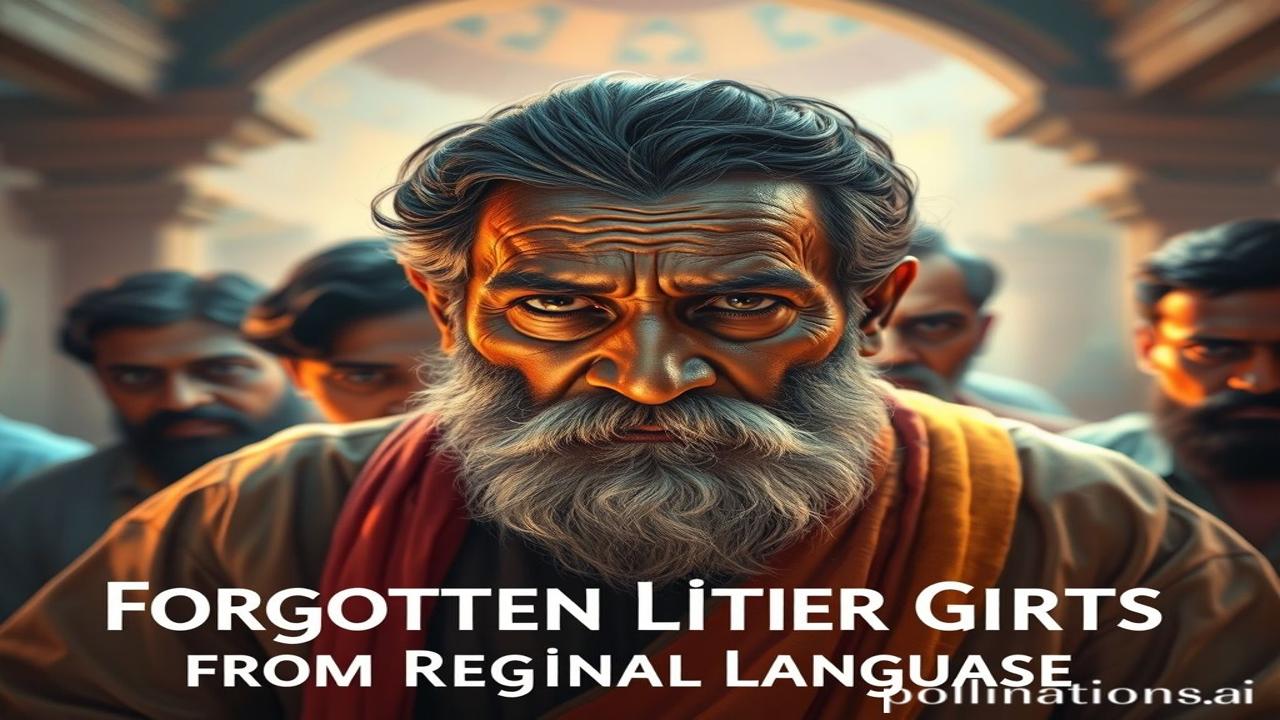Gumnaam Sitaare: Unsung Literary Heroes from Regional Languages
Kabhi socha hai, India ki har ek zabaan mein chhupi hui kitni kahaniyan waqt ki dhool mein kho gayi hain? Kitne aise lekhak aur kavi hain jinhone apni kalam se zameen ko hila diya, dil ko chhu liya, lekin aaj hum unke naam tak bhool gaye hain. Let’s rediscover some of these gumnaam sitaare – forgotten literary giants from our regional languages.
Itihasic Background: A Tapestry of Voices
India’s literary landscape is a vibrant tapestry woven with countless threads of regional languages. From the ancient Tamil Sangam literature to the powerful poetry of Bhakti saints in Hindi, Marathi, and Bengali, our nation has always been a melting pot of diverse voices. But many of these voices, especially those from smaller or lesser-known languages, have been silenced by the tides of time and mainstream narratives.
Yeh itihasik background kitna important hai? Imagine a garden with only roses. It would be beautiful, yes, but incomplete. The beauty of a garden truly shines when you have lilies, sunflowers, jasmines, and every other flower, each adding its unique color and fragrance. Similarly, India’s literary richness lies in the diversity of its regional languages and the writers who gave them life.
Think about the Bhakti movement. Saints like Basavanna in Kannada (12th century) challenged societal norms with their vachanas, while Meerabai in Rajasthani (16th century) poured her heart out to Krishna in soulful bhajans. These were voices of rebellion, love, and devotion, speaking directly to the people in their own tongues. But how much do we truly know about their struggles and their genius beyond the famous names?
Zameeni Sach: Log aur Jeevan
Imagine a village in Karnataka, 12th century. Basavanna, a social reformer and poet, is gathering people. “Vachana,” he declares, meaning ‘what is said.’ These are not mere poems; they are revolutionary thoughts, spoken in the language of the people.
“Work is worship!” he proclaims, challenging the rigid caste system that confined so many. Farmers, artisans, and laborers gather around, listening intently. Ma Rukmini, a weaver, feels a surge of hope. For the first time, her work is being recognized as sacred. Her hands, stained with dye, are suddenly imbued with dignity.
Fast forward to Rajasthan, 16th century. Meerabai, a Rajput princess, rejects the opulent life of the palace. She dances in the streets, singing bhajans in praise of Krishna. Her defiance is scandalous. “Log kya kahenge?” her family cries. But Meera’s love is unwavering. Her songs, filled with longing and devotion, echo through the dusty landscape.
Yeh log, yeh jeevan… they are the soul of regional literature. They represent the hopes, dreams, and struggles of ordinary people, immortalized in verse and prose.
Dharohar aur Pehchaan: Echoes of the Past in the Present
Today, we see echoes of these forgotten giants in many aspects of Indian life. The Bhakti movement’s emphasis on equality and devotion continues to inspire social reformers and spiritual seekers. Their poems are still sung in temples and homes, connecting us to our cultural roots.
Regional literature also plays a crucial role in shaping our modern identity. It reminds us that India is not a monolithic entity but a mosaic of diverse cultures and languages. By celebrating these literary giants, we honor our heritage and strengthen our sense of Bharatiyata. Think about the influence of Rabindranath Tagore (Bengali) on Indian art, music, and thought. He proves that regional literature can transcend borders and become a source of national pride.
Mazedaar Tathya ya Bhram-Bhanjak: Unveiling the Truths
Myth: “English literature is superior to regional literature.”
Truth: Regional literature offers unique perspectives and insights into Indian culture and society that are often missing in English literature. It reflects the nuances of local traditions, languages, and experiences. It’s not about superiority but about different vantage points.
Visual and Sensory Layer: Painting with Words
Imagine the air thick with the scent of jasmine and incense in a Karnataka village, the rhythmic clang of a weaver’s loom echoing in the background. Or picture the vast, sun-drenched desert of Rajasthan, the vibrant colors of Meera’s ghagra swirling as she dances in ecstasy. The temple walls feel cool to the touch, worn smooth by centuries of devotion. The sounds of the ektara resonate through the air, carrying the melodies of Meera’s bhajans.
These are the sensory details that bring regional literature to life, making it a truly immersive experience.
Antim Vichar ya Uddharan: Reflecting on the Legacy
“भाषासु मुख्या मधुरा दिव्या गीर्वाणभारती।
तस्माद्धि काव्यं मधुरं तस्मादपि सुभाषितम्।।”
(Bhashasu mukhya madhura divya girvanabharati;
Tasmaddhi kavyam madhuram tasmadapi subhashitam.)
“Among languages, the chief, sweet and divine is Sanskrit.
Superior to it is poetry and even more so is a well-spoken verse.”
While this verse speaks of Sanskrit, the sentiment applies to all languages. Every tongue holds a world of beauty, wisdom, and creativity. Let’s make an effort to rediscover the forgotten voices of our regional languages, so that their stories continue to inspire and enrich our lives. These gumnaam sitaare deserve to shine brightly once again.
